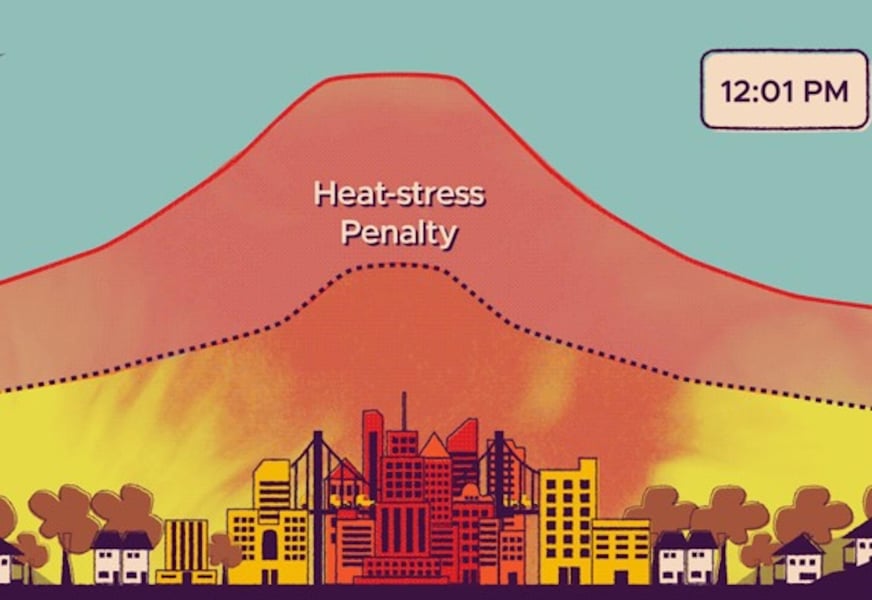City Living Is Hotter With Urban ‘Heat Penalty’

WEDNESDAY, Dec. 22, 2021 (HealthDay News) -- Summer can sizzle in the city, but a new report finds urban living is getting hotter than ever before.
The research shows that city dwellers may be suffering from what scientists call an urban "heat penalty" -- an extra two to six hours a day of uncomfortably hot summer temperatures.
And most of those sweltering hours occur at night because cities soak in heat during the day and release it at night. It's known as the urban heat island effect.
“People have known about the urban heat island effect for more than 180 years, but the fact that the differences between nighttime and daytime and among different cities is so substantial is somewhat surprising,” said Yun Qian, an atmospheric scientist at the Department of Energy's Pacific Northwest National Laboratory in Richland, Wash.
“Our findings show that urban living makes nighttime hours in all U.S. cities studied more uncomfortable,” Qian said in a laboratory news release.
He and his colleagues analyzed data gathered over six summers (2008 to 2013) in large central and eastern U.S. cities such as New York, Boston, Philadelphia, Atlanta, Miami, Chicago, Detroit, Houston, Dallas and Washington, D.C.
Compared to nearby rural areas, the cities had a nighttime heat stress index that was 3.5 to 9 degrees Fahrenheit higher. The index is a measure of heat and humidity.
Researchers said the daytime difference was less because lower humidity makes some cities slightly more comfortable in the day.
But the heat penalty of living in a city rather than out in the country is even larger during a heat wave, the study found. The hotter it is, the bigger the heat penalty in cities -- which is a concern as temperatures rise due to climate change.
More than 4 in 5 Americans live in urban areas, and extreme heat is regularly cited as a leading weather-related cause of death in the United States, often ahead of floods, wildfires and hurricanes.
The study was recently published in the journal Geophysical Research Letters and presented Thursday at the annual meeting of the American Geophysical Union in New Orleans and online.
More information
The U.S. Centers for Disease Control and Prevention offers hot weather safety tips.
SOURCE: Pacific Northwest National Laboratory, news release, Dec. 16, 2021
Related Posts
End of Roe v. Wade May Have More Women Opting for Permanent Contraception
THURSDAY, Jan. 5, 2023 (HealthDay News) -- Jasmine Quezada, a Los Angeles tax...
Risk of Vision Trouble Rises in Children With Type 2 Diabetes
THURSDAY, Dec. 9, 2021 (HealthDay News) -- A condition called "diabetic...
More Americans Than Ever Believe Marijuana Smoke Is Safer Than Cigarette Smoke. They’re Wrong
MONDAY, Aug. 14, 2023 (HealthDay News) -- As cannabis use has become legal in...
¿Cirugías de rodilla u hombros sin opioides? Un estudio encuentra que es posible
LUNES, 10 de octubre de 2022 (HealthDay News) -- Mientras los políticos y las...
